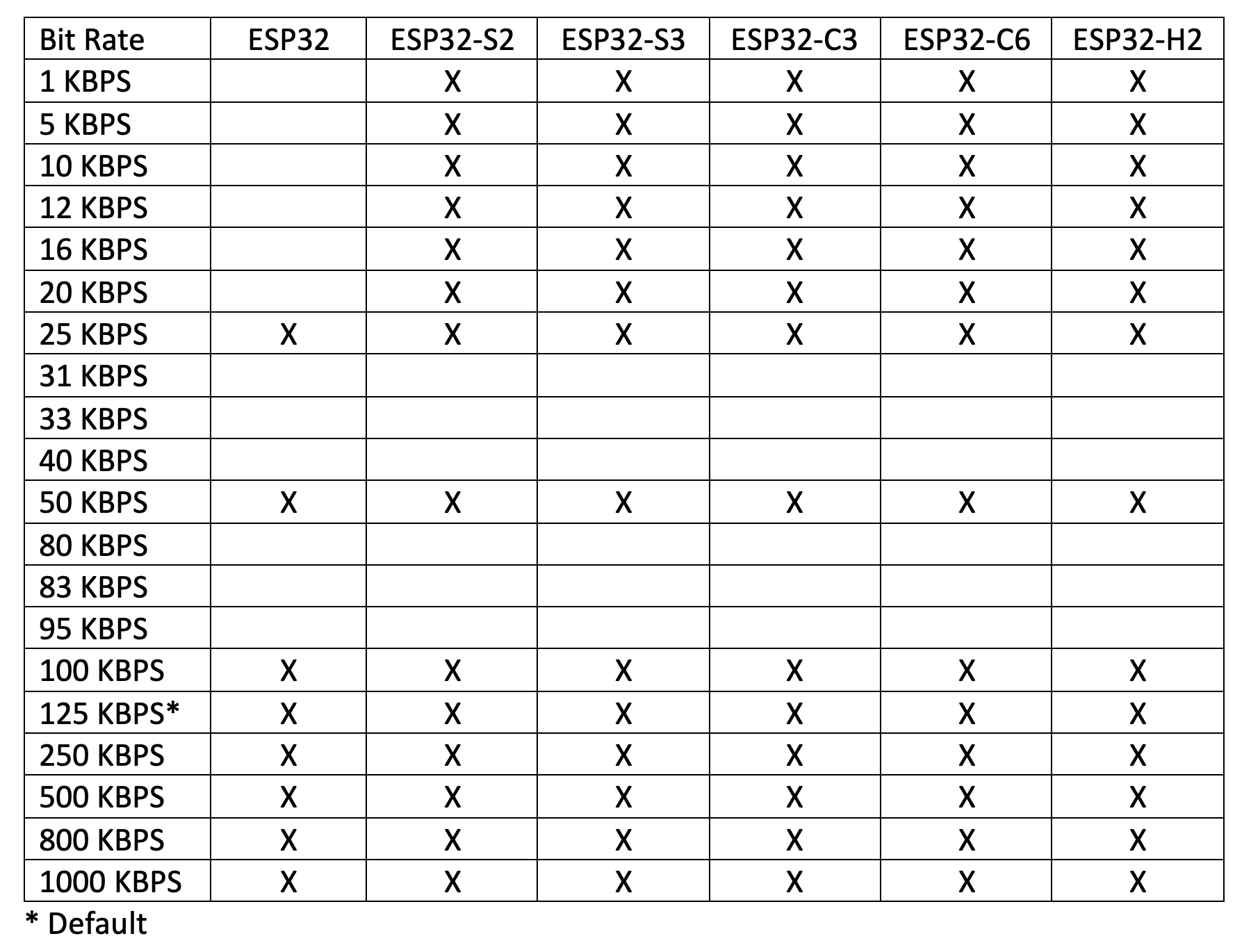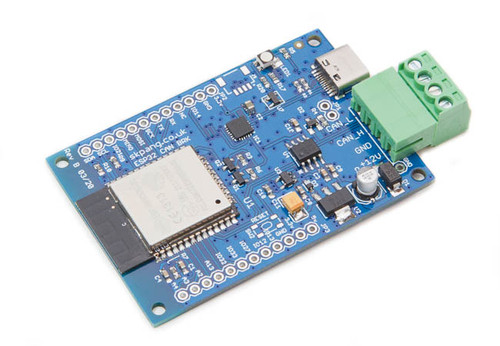Blog
Recent Posts
ESP32 Processor: Internal SJA 100 CAN Bus Controller
Posted by on
This post is an excerpt from our application note Controller Area Network (CAN) Development with ESP32.
The ESP32 integrates a CAN Bus controller compatible with the NXP SJA1000. Thus, it is CAN 2.0B (ISO 11898, a.k.a. Classical CAN) specification-compliant.
As with the SJA1000, the ESP32 CAN Bus controller provides only the data link layer and the physical layer signaling sublayer. Therefore, an external transceiver module is required, which converts the ESP32's CAN-RX and CAN-TX signals into CAN_H and CAN_L bus signals. The transceiver, such as the MCP2551 or SN65HVD23X, provides compatibility with ISO 11898-2.
Note: The SJA1000 does not support CAN-FD and is not CAN-FD tolerant. To implement CAN-FD with the ESP32, you must utilize CAN-FD breakout boards accessible via the SPI port.
It is crucial to know that the ESP32’s internal CAN controller supports only a limited set of CAN bit rates. The following table lists the bit rates for various ESP32 variants:

It would, however, be short-sighted to consider this a limitation. While, for instance, the basic ESP32 version supports a smaller set of bit rates, it also adheres to the standard bit rates commonly used in the industry.
ESP32 WiFi, Bluetooth Classic, BLE, CAN Bus Module
This board has an onboard ESP32 WROOM-32 WiFi, Bluetooth Classic, BLE Module, and a CAN Bus port with a transceiver. Also onboard are an RGB LED and IO pins on a 0.1" pad.
Programming is accomplished through the popular Arduino IDE connected to the USB-to-Serial converter with a USB-C connector, automatic bootloader, and reset. The ESP32 is a low-cost, low-power system-on-chip microcontroller with integrated Wi-Fi and dual-mode Bluetooth. It employs a Tensilica Xtensa LX6 microprocessor in dual-core and single-core variations.
It includes built-in antenna switches, RF baluns, a power amplifier, a low-noise receive amplifier, filters, and power management modules. More Information...
ESP32 Processor with Internal SJA 1000 CAN Bus Controller
This post is an excerpt from our application note Controller Area Network (CAN) Development with ESP32. The ESP32 is a low-cost, low-power system-on-chip microcontroller with integrated WiFi and dual-mode Bluetooth. It employs a Tensilica Xtensa LX6 microprocessor in dual-core and single-core variations. It includes built-in antenna switches, RF balun, power amplifiers, low-noise receive amplifiers, filters, and power [...]
 Loading... Please wait...
Loading... Please wait...

